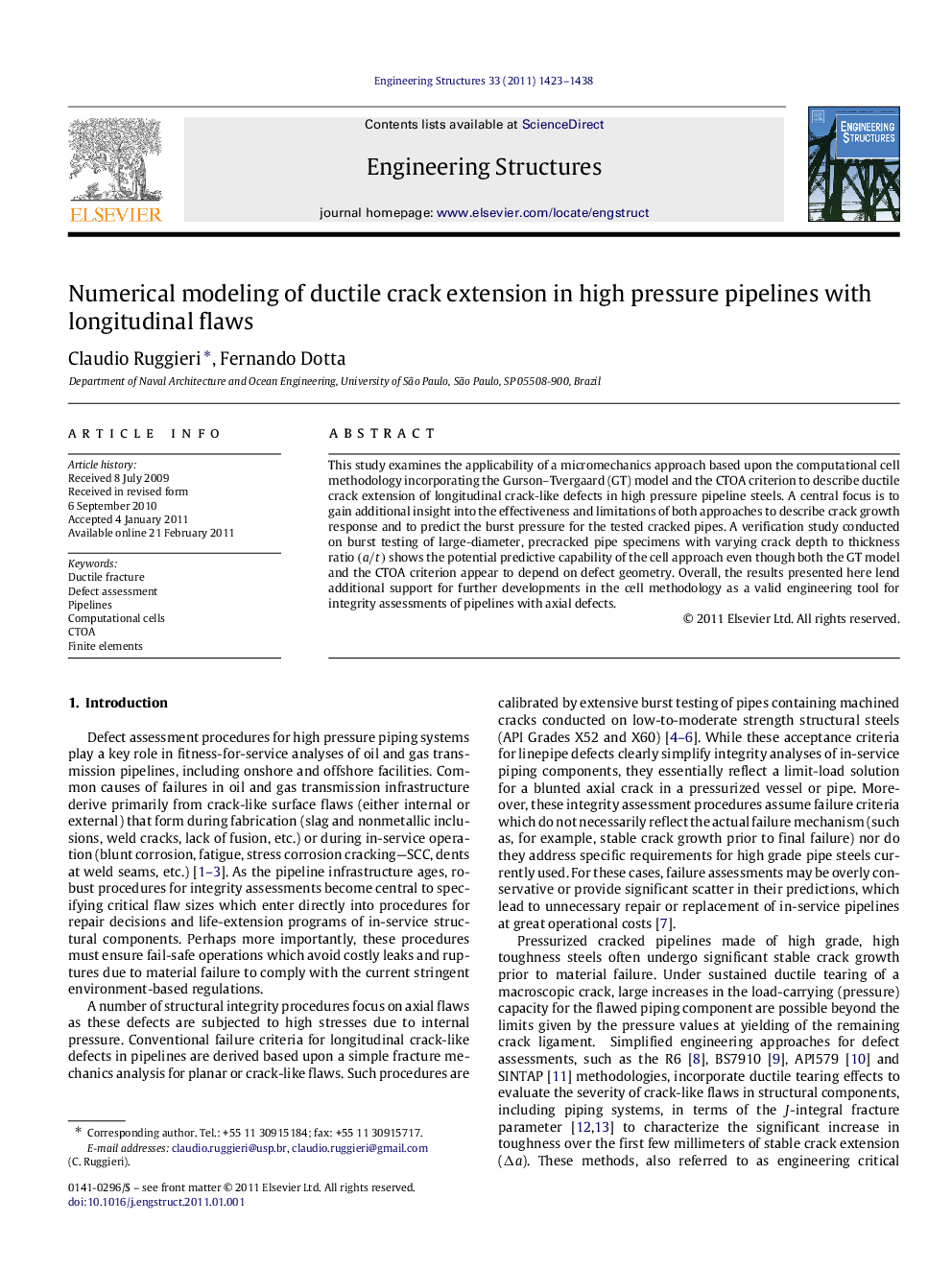| Article ID | Journal | Published Year | Pages | File Type |
|---|---|---|---|---|
| 268157 | Engineering Structures | 2011 | 16 Pages |
This study examines the applicability of a micromechanics approach based upon the computational cell methodology incorporating the Gurson–Tvergaard (GT) model and the CTOA criterion to describe ductile crack extension of longitudinal crack-like defects in high pressure pipeline steels. A central focus is to gain additional insight into the effectiveness and limitations of both approaches to describe crack growth response and to predict the burst pressure for the tested cracked pipes. A verification study conducted on burst testing of large-diameter, precracked pipe specimens with varying crack depth to thickness ratio (a/t)(a/t) shows the potential predictive capability of the cell approach even though both the GT model and the CTOA criterion appear to depend on defect geometry. Overall, the results presented here lend additional support for further developments in the cell methodology as a valid engineering tool for integrity assessments of pipelines with axial defects.
